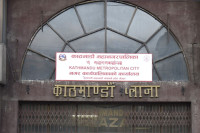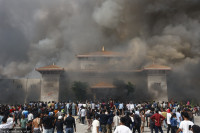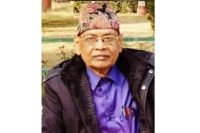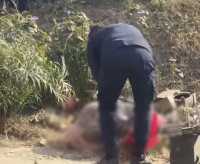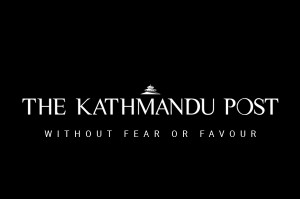Valley
Corridor Management Team mobilised to manage traffic on river corridor roads
Urban planners say the only way to minimise the perennial traffic jam in Kathmandu is by installing more traffic lights and operating arterial roads.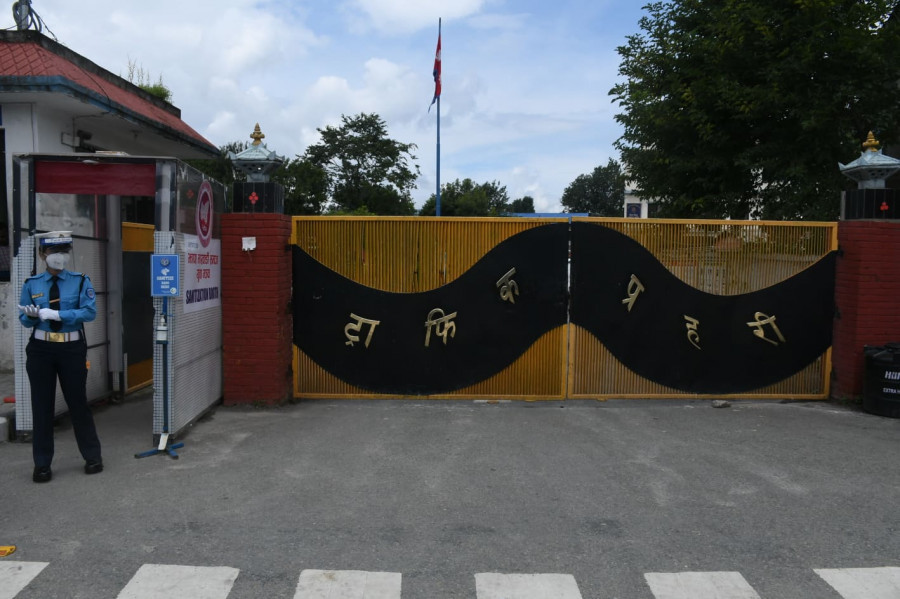
Anup Ojha
The Metropolitan Traffic Police Division has formed a team to manage traffic along major river corridors in Kathmandu.
The Corridor Management Team (CMT) will have 30 traffic police personnel who will be mobilised in 17 motorcycles to manage traffic along the river corridors, where motorists have been found parking their vehicles obstructing the traffic flow.
The river corridors were developed to ease the traffic volume on city roads. But the corridor roads itself have been facing the problem of traffic congestion due to
haphazard parking of vehicles.
“One of CMT’s main objectives will be to remove the vehicles parked on the corridor roads and keep the traffic moving smoothly,” said Senior Superintendent Janak Bhattarai, also chief of Metropolitan Traffic Police Division.
According to the division office, traffic congestion is high at UN Park, Narephat and Dovan Chowk sections.
The CMT will also encourage motorists to use the corridor roads to ease the problem of traffic jams on city roads.
“If we could make more people travel through the corridor roads of Dhobi Khola, Bagmati, Manohara and Bishnumati, we can reduce the problem of traffic jams on the city roads by around 20 percent,” said Bhattarai.
Urban planners and the members of the public, however, say encouraging people to use the corridor roads is not enough to ease Kathmandu’s traffic jams.
Kishor Thapa, a former government secretary and an urban planning expert, suggests that the authorities should first make the bridge underpass clearance much higher for pick-up trucks and microbuses to pass through.
“More vehicles will use the corridor roads if the bridge underpass clearance is increased to fit the large vehicles,” he said.
Rajan Gautam, who commutes regularly through the Bagmati Corridor, says the authorities should also be careful not to go overboard and direct all vehicles through the corridor roads.
“I ride through the Bagmati Corridor regularly and my commute is not as smooth as it used to be in the early days. Traffic jams have become more intense lately,” he said. “There are only so many vehicles the two-lane corridor roads can accommodate.”
With the increasing number of vehicles on the road, traffic jams have become a perennial problem in Kathmandu Valley. According to Superintendent of Police Shyam Krishna Adhikari, at present 1.5 million vehicles operate daily in Kathmandu Valley.
Thapa, the urban planning expert, says the authorities should also explore other options to deal with the increasing traffic jams, like installing more traffic lights and constructing flyovers and under passes in arterial road sections.
There have been many plans and promises from the government to construct flyovers and underpasses, but they have not been realised.
Last year, former Finance Minister Yubraj Khatiwada had unveiled a plan to construct flyovers and underpasses to resolve the problem of traffic jams but that has not started yet. The Department of Roads in 2018 had also announced to construct an underpass at New Baneshwor through Bijulibazar and extend it up to Shantinagar. Again, the plan was not followed through.
The flyover project for Maitighar-Tinkune road proposed by the Nepali Congress government led by Sushil Koirala back in 2014 was also not implemented.




 16.12°C Kathmandu
16.12°C Kathmandu.jpg)

